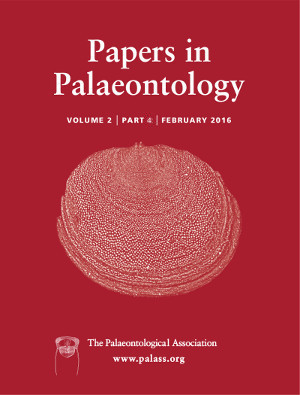Reg. Charity No. 1168330

Trialestes romeri (Reig) is an early crocodylomorph from the Ischigualasto Formation (late Carnian – early Norian; Ischigualasto – Villa Unión Basin, Argentina) and one of the oldest‐known members of this clade. Two specimens of this species are known, the holotype (PVL 2561) and a referred specimen (PVL 3889), both consisting of associated cranial and postcranial remains. These specimens are incomplete and poorly preserved thus leading previous authors to propose different phylogenetic hypotheses for the species. Trialestes romeri was originally interpreted as a basal dinosaur, subsequently considered to be a crocodylomorph with some dinosaurian characters (e.g. mesotarsal ankle joint, functionally tridactyl pes), and even proposed as a chimera representing two different genera. Some recent workers have mentioned and discussed Trialestes, but none have described it in detail or included it in a quantitative phylogenetic analysis. Here, we describe in detail all the material assignable to the species and test its phylogenetic relationships using a comprehensive data matrix focused on early archosaurs. We support the referral of PVL 3889 to Trialestes and reject the presence of a mesotarsal ankle joint in this specimen. We recovered Trialestes within Crocodylomorpha, closer to Crocodyliformes than Pseudhesperosuchus, Hesperosuchus, Dromicosuchus and Sphenosuchus. Several stratigraphical units worldwide approximately coeval with the Ischigualasto Formation, have also yielded early crocodylomorph remains, such as the upper Santa María (Brazil), Pekin (USA), and lower Maleri (India) formations. However, the crocodylomorph specimens recovered from those units are more incomplete, possess uncertain phylogenetic affinities, or are part of chimaerae. Therefore, Trialestes represents the most completely known of the earliest non‐crocodyliform crocodylomorph taxa known to date.